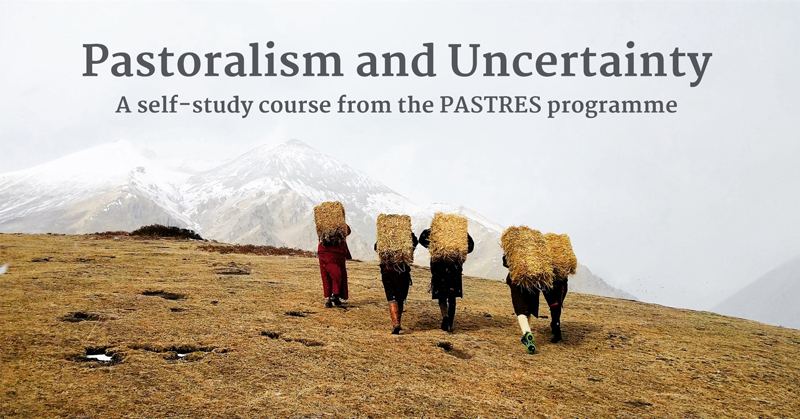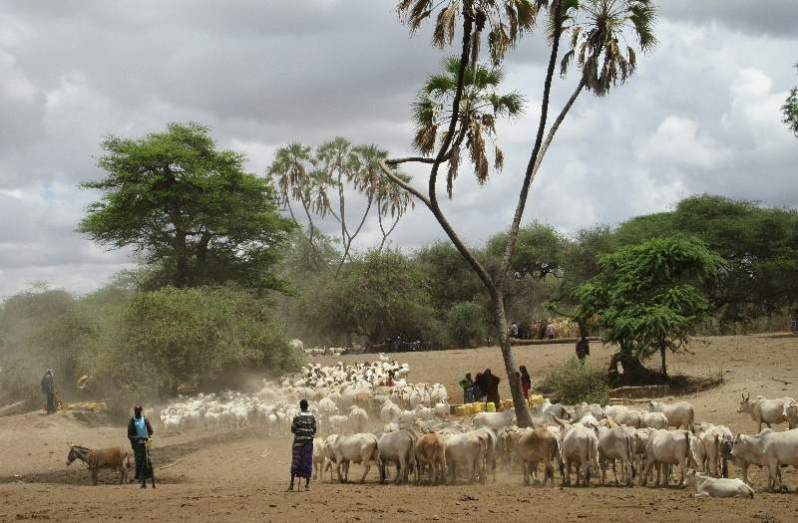
Pastoral systems must make use of highly variable environments, subject to frequent droughts, floods or heavy snowfall events. In such settings standard rangeland management approaches, premised on ‘Clementsian’ succession models, do not work. Theories of non-equilibrium rangeland ecology emerged from an understanding that climatic events drive the dynamics of such systems.
When a drought strikes regularly, livestock populations are rarely at ‘equilibrium’ level, meaning that notions of ‘carrying capacity’ and ‘stocking rate’ control become irrelevant. High levels of spatial and temporal variation in fodder production means that mobility is an essential response, and fencing and land fragmentation can undermine production. Arguments about land degradation and desertification are further challenged by understandings of how such environments recover rapidly, and how ‘deserts’ may indeed be prevented by pastoral use.

However (inevitably), in many settings the story is not so clear-cut. For example, in some areas, different parts of a landscape may be more or less at equilibrium, and this may change over time. Access to ‘key resource’ patches – those areas where the last food and water is available – may be crucial in determining potential livestock population sizes, and their removal or reduced productivity may have major impacts. Equally, where fodder or water is trucked into an area, the dynamics change again.
Climate change is likely to affect the dynamics of rangelands in profound ways, shifting the frequency of extreme events, as well as increasing the extent of dryland areas in some regions. As well as covering the scientific debates, the lecture also examines some of the science-policy relationships in discussions around rangelands and desertification.
 Watch the lecture
Watch the lecture
 Questions
Questions
- What characteristics of a ‘non-equilibrium’ environment exist in pastoral areas you know?
- How are these features being changed by for example climate change, infrastructure development, competing land uses, fencing, fodder imports and so on?
- What are some of the problems with the policy/operational approaches to ‘climate adaptation’ and ‘resilience’ in light of our understanding of non-equilibrium systems and climate change variability?
- How do scientific and policy discourses on rangelands and pastoralism shift (or not) in your area, and why?
 Readings
Readings
- Behnke R., Scoones I. and Kerven C., eds. (1993) Range Ecology at Disequilibrium: New models of Natural Variability and Pastoral Adaptation in African Savannas. London: Overseas Development Institute. (See also: Rethinking range ecology: implications for rangeland management in Africa. IIED Issue Paper, 1992)
- Davis, D. (2020) Of Deserts and Decolonization: Dispelling Myths About Drylands PASTRES blog
- Scoones, I. (2022) What is Environmental Degradation, What Are Its Causes, and How to Respond? IDS Working Paper 577
- Scoones, I. (2018) Review of The End of Desertification? Disputing Environmental Change by Roy H. Behnke and Michael Mortimore. Pastoralism 8: 26
- Vetter, S. (2005) Rangelands at equilibrium and non-equilibrium: recent developments in the debate. Journal of Arid Environments 62(2), pp.321-341
- On policy processes, see the IDS booklet Understanding policy processes, alongside the lecture on policy processes recorded at the STEPS Centre’s Summer School.
